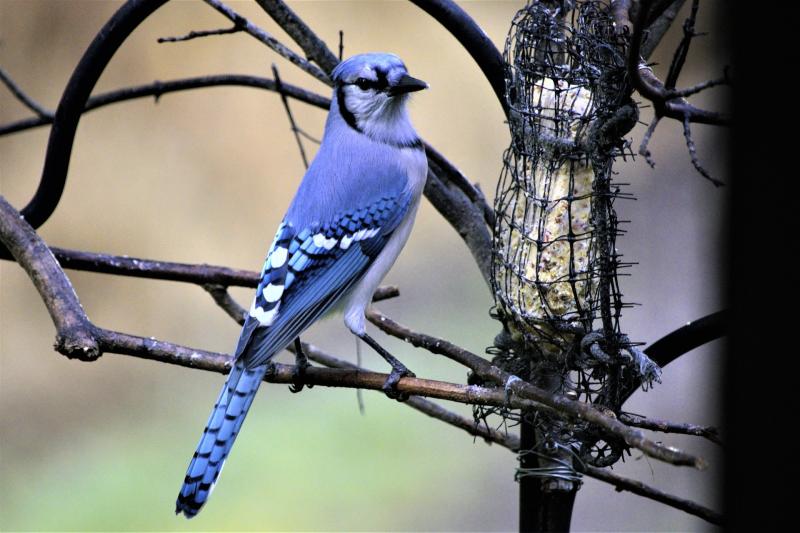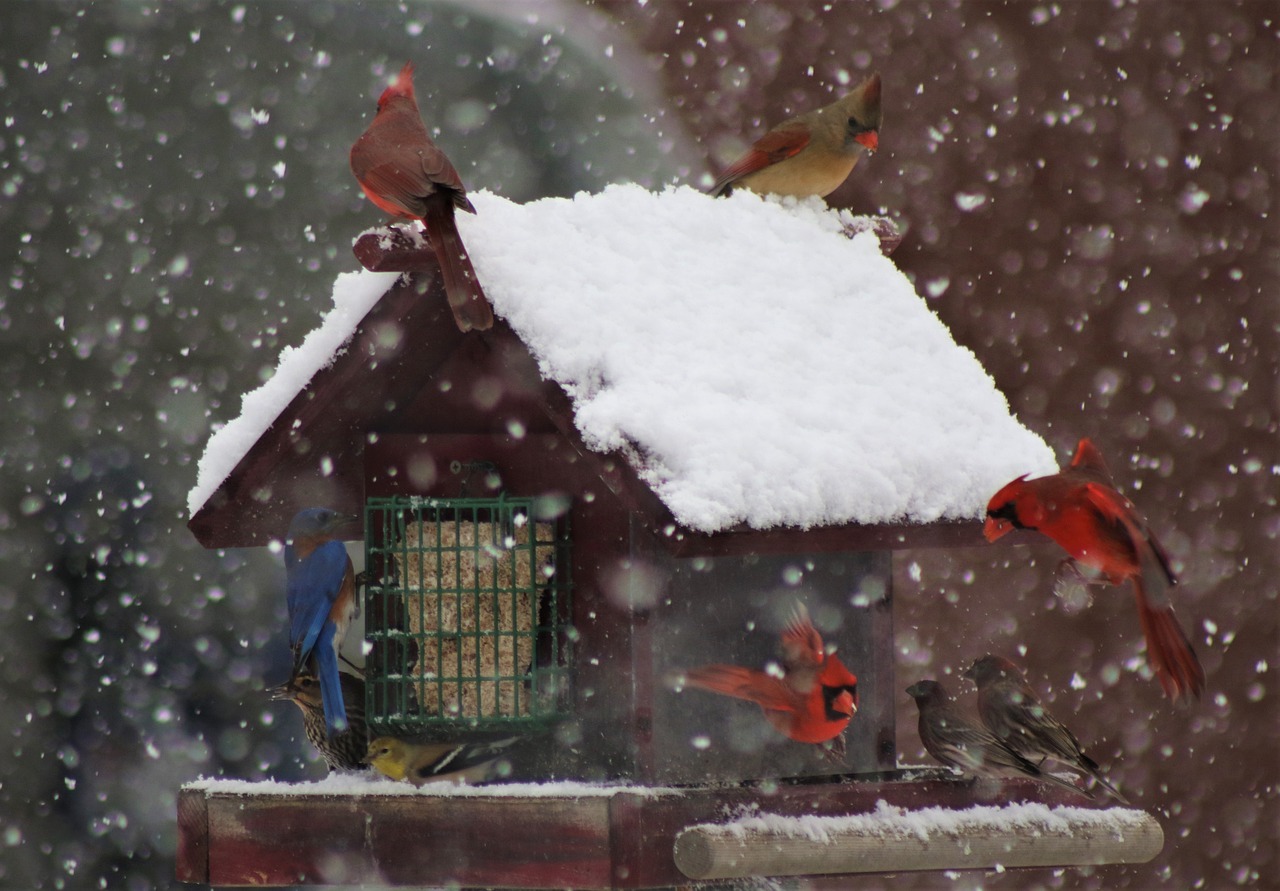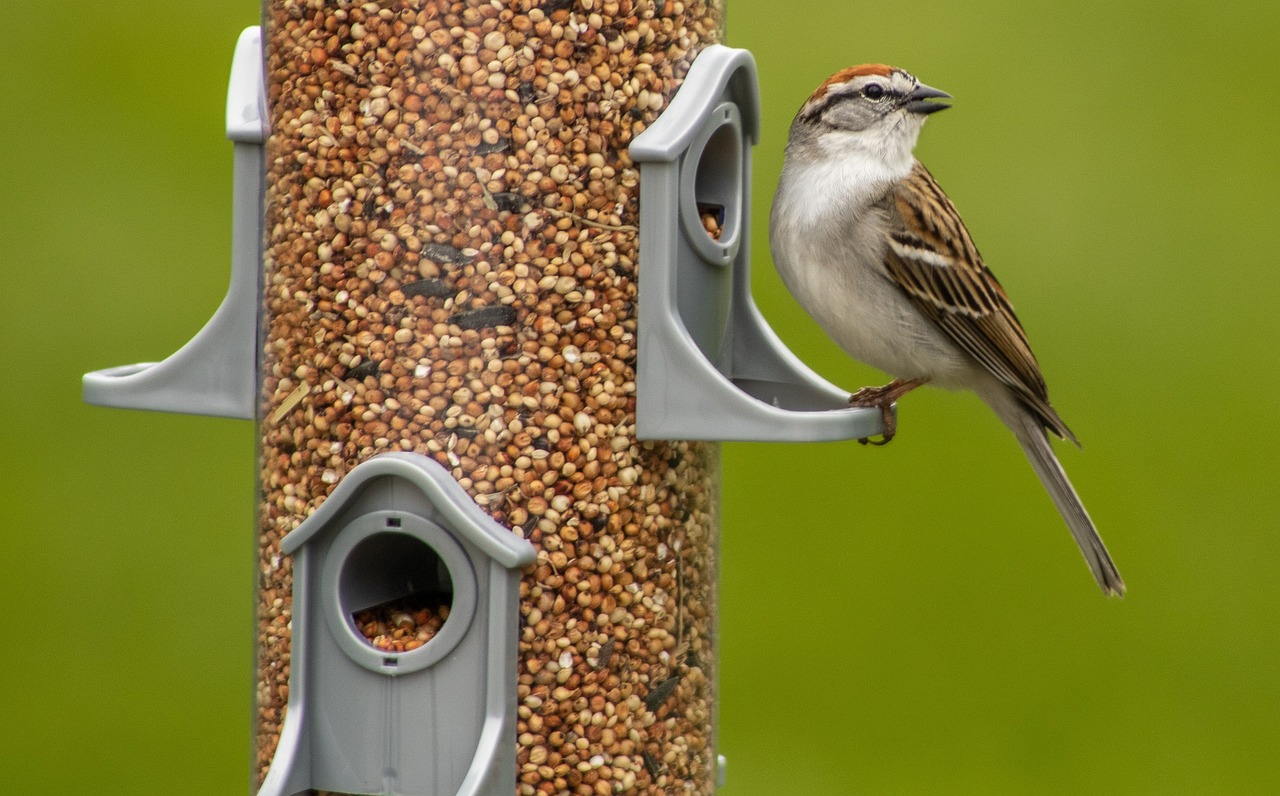
Watching and feeding birds is a great activity year-round, but definitely brightens up the winter months! Nebraska is an excellent place to enjoy bird watching, with nearly 400 bird species across the state including 200 nesting species. Bird feeding can provide regular observation of 15-20 or more bird species which commonly visit backyard feeders
To successfully attract birds throughout the year, provide their three basic needs - food, water and cover. Cover includes shelter from harsh weather and predators, plus a place for nest building and raising of young. Bird feeders, birdhouses for cavity nesters, a source of water and various plant materials help fill the habitat needs for backyard birds. Dense evergreens are great cover from harsh weather. Fruit and seed producing plants are great food sources. Native plants, which host moth caterpillars in summer and winter, are a very necessary food source, too. Many bird watchers, and even gardeners, don't realize moth caterpillars, including many species of inchworms, are present even in winter.
 You can start a bird feeding program anytime, but results will vary with the seasons. For winter feeding, it's good to have feeders in place by mid to late September. This is the time birds which spend the winter in your area will be looking for feeding sites. But that doesn't mean feeders put out in December, or even January, won't draw birds. Numbers at your feeders may be low at first but will pick up during really cold spells. Birds will rely on your feeders most during winter extremes, especially when snow or ice covers natural food sources during late winter and early spring.
You can start a bird feeding program anytime, but results will vary with the seasons. For winter feeding, it's good to have feeders in place by mid to late September. This is the time birds which spend the winter in your area will be looking for feeding sites. But that doesn't mean feeders put out in December, or even January, won't draw birds. Numbers at your feeders may be low at first but will pick up during really cold spells. Birds will rely on your feeders most during winter extremes, especially when snow or ice covers natural food sources during late winter and early spring.
Bird Feeder
There are many bird feeders available commercially, or you can make your own. Seed feeders can be as simple as a raised platform or a window shelf feeder. Hopper-type feeders have an overhanging roof that protects the seeds from moisture. Tube feeders and some hanging feeders are designed to accommodate smaller birds while discouraging blue jays, starlings, and squirrels. Providing several feeders may give the desirable birds a greater competitive edge.
Seed & Suet Mixes
Bird seed mixes are readily available in supermarkets, garden stores, and bird specialty stores. The most economical method for feeding birds is to use two common seeds - the black oil sunflower seeds and white proso millet. With these seeds, expect to find cardinals, chickadees, house finches, juncos, and doves at your feeder.
Project FeederWatch, from the Cornell Ornithology Lab is a great source for additional information on bird feeder and food types.
The addition of a suet feeder will attract woodpeckers, nuthatches, and other woodland species to your yard. Place fruit on a platform feeder to attract cedar waxwings, orioles other birds.
Carefully plan your feeder location to maximize its visibility for both you and the birds. Open areas, where you can see birds from your window and birds can see predators approaching from the ground and air, are ideal. Cats and hawks will be attracted to congregating birds. Preferably, shrubs or trees should be located ten to fifteen feet from the feeder. This will provide escape cover for fleeing birds.
Keep Your Feeders Clean Don't forget to clean and disinfect your seed and suet feeders periodically - ideally every two weeks - or more often when feeders are in heavy use. Feeders which can be brought indoors, when temperatures outside are cold, and disassembled make cleaning easier. Wash the feeder in soapy water, then dunk it in a 10% bleach solution. Allow it to dry before refilling and placing outside.
Don't forget to clean and disinfect your seed and suet feeders periodically - ideally every two weeks - or more often when feeders are in heavy use. Feeders which can be brought indoors, when temperatures outside are cold, and disassembled make cleaning easier. Wash the feeder in soapy water, then dunk it in a 10% bleach solution. Allow it to dry before refilling and placing outside.
Relocate the feeder when several inches of discarded seeds begin to accumulate on the ground. Wet seeds are a breeding ground for a fungus which causes a potentially fatal bird infection, and excessive bird droppings can pose a health hazard. If relocating the feeder is not possible, then rake out and discard the accumulated waste beneath the feeder every two weeks
For more information on feeder cleaning, read the Aububon Society's guide to feeder maintenance and hygiene.
Provide Water
A fresh, unfrozen water source is as important to birds in the fall and winter as other seasons, but can be very difficult to find when temperatures drop. Provide birds with a flat, shallow container, such as a large clay saucer, that can be cleaned easily. An immersion heater will keep the water from freezing.
Squirrel-Proof Your Feeders
If squirrels become a problem, squirrel-resistant feeders are available commercially, and squirrel baffles can be mounted under a post feeder. Another option is to apply hot pepper to the seeds, which won't affect birds but may slow down squirrels' consumption, according to a Cornell University study. However, squirrels don't give up easily. For more information on how to squirrel-proof your feeders, take a look at Deterring Nuisance Wildlife at Bird Feeders.
- Birds will rely on your feeders most during winter extremes, especially when snow or ice covers natural food sources during late winter and early spring.
- Tube feeders and some hanging feeders are designed to accommodate smaller birds while discouraging blue jays, starlings, and squirrels.